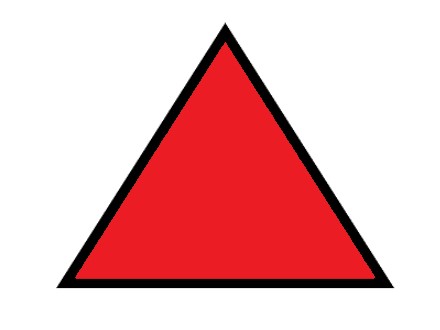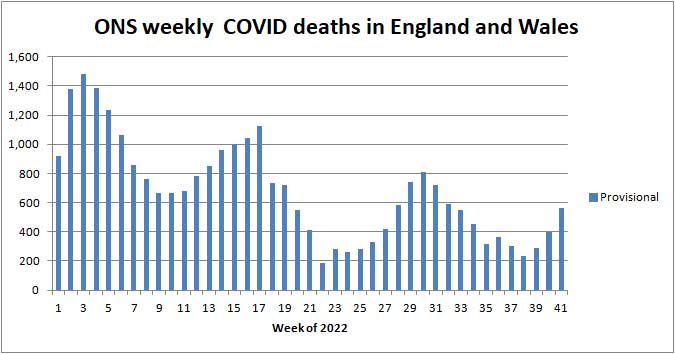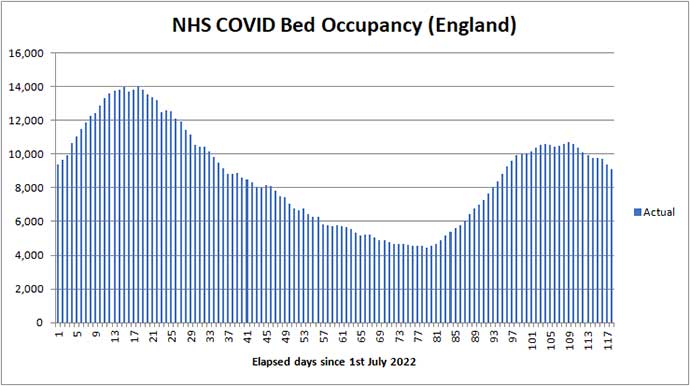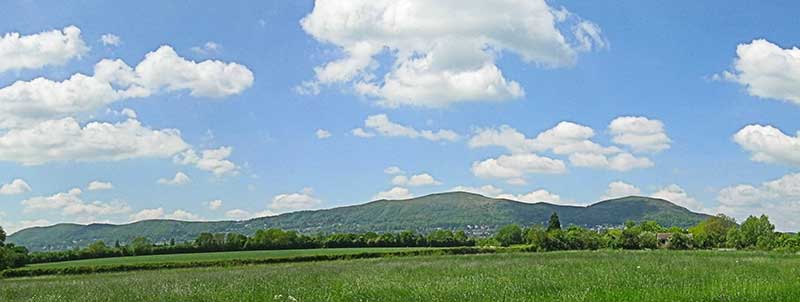
Angus and Rosemary's Miscellany
of Malvern - Other Resources
|
Coronavirus (COVID-19) epidemic weekly update for Malvern SeniorsClick to read our observations on politics and world events 30th October 2022
Those aged 50+ years can book Autumn booster vaccinations PreambleFor more than two years we have been keeping an eye on the published government figures and monitoring the media to asses the likely level of risk for Seniors in the Malvern Hills district and providing links to where further information could be found. During the epidemic Public Health England was split into the UK Health Security Agency and Office for Health Improvements and Disparities. However for simplicity, in this blog, we have continued to refer to this as PHE data. Testing has been run down and the public can no longer record the result of Lateral Flow tests so the daily cases reported on the Coronavirus Dashboard greatly underestimate the actual situation, and we have deleted our section on testing; this can however be found on archived pages. The only remaining sources of data indicating direction of travel are:
Now the epidemic seems largely over in the UK the numbers are of less importance, but we'll carry on with our blog for a little while longer. As sections become no longer relevant we are deleting them, but you can always refer back to archived pages. This page will continue to be updated each weekend using Friday's data, nominally with Sunday's date. ContentsSummaryThe Autumn/Winter Wave of COVID appears to have peaked and NHS COVID bed occupancy in England has begun to fall. What we don't know is how fast and how deeply cases will dip before the roller coaster ride possibly takes another upward turn. The incidence of COVID remains high which is a good reason to take care; test if you still have Lateral Flow Tests; and take any necessary precautions to limit the spread. For example, do not attend meetings in person if you are feeling poorly. People we know are still catching COVID, but not suffering badly. For most, COVID no longer represents a critical threat to health. In Worcestershire relatively few people are being admitted to hospital with severe illness and typically only a handful of patients a week are dying in a population of approximately 600,000. Death rateAfter dipping to somewhere between 230 and 300 deaths per week the COVID death rate in England and Wales has risen to 563 and could possibly rise towards 800 deaths per week later in the winter. That's a lot but nothing for most people to be concerned about. Winter wave of COVID-19The present wave of COVID-19 peaked last week so a fair chance that COVID will not affect celebrations this Christmas - though that could lead to an upturn in January 2023. Autumn booster jabsAutumn booster vaccinations are now on offer to all those aged 50+ years and the vulnerable. Seniors are advised to get both the COVID booster and flu jab to reduce the likelyhood of severe illness and hospitalisation. See Booster shots section below. What happens if you get sickBecause the vaccines rarely stop people catching COVID and prevalence is rising do not be surprised if you catch COVID despite being fully vaccinated. Infection 12 months ago rarely stops people getting sick for a second time. Some may either show no symptoms or have a mild fever, sore throat, general aches and pains, and quickly get over it; while others could feel quite poorly and spend between two and five days in bed, with it taking five to ten days or so to recover. Many of those who have caught COVID report either getting easily tired or suffering from shortness of breath for some weeks afterwards; if so patients are advised to take it easy until fully recovered. PrecautionsAny precautions to take are now a personal decision. The bookmark below will take you to the Worcestershire County Council webpage links at the end - there is little new to see. Click for Worcestershire Dashboard and associated links Booster shotsAn Autumn booster jab is being offered to all those aged 50+ years and vulnerable groups. Note: you should not book if it is less than 3 months since your last vaccination or you have had COVID within the last 2 weeks. Either the NHS or your GP Surgery (or both) should contact you when it is your turn to book; either by email, text message or letter. You should not need to contact them. The arrangements for getting vaccinated have changed slightly with the rollout of Autumn boosters. According to SW Healthcare, representing GP Surgeries, the centre at the Three Counties Showground has closed and vaccinations will either be at GP Surgeries, or at walk-in 'Pop-Up' Clinics, else roving 'Vaccine Vans' which are otherwise known as 'Jab-Vans'. That is not the complete picture as some pharmacies such as Claremont House in Barnards Green and Evans in Malvern Link will also be offering walk-in and timed appointments. To book an Autumn Booster on-line:- Click for NHS National Booking Service Note: you may sometimes have to travel out of town to get an Autumn booster appointment, depending on vaccine availability. Alternatively you can wait to be contacted by your GP Surgery and in due course get your Flu vaccine at the same time. Don't forget to check the mobile phone you have registered with your GP surgery for text messages. If you think you have been forgotten or don't have a mobile phone, phone your GP surgery to book an appointment. Our email from the NHS included a link for finding walk-in centres: Click this NHS link to find a walk-in coronavirus (COVID-19) vaccination site Depending on availability you could be offered either of the original Pfizer and Moderna vaccines, or the new Pfizer and Moderna bivalent vaccines which protect against both the original Wuhan strain and Omicron BA.1. The SW Healthcare website explains the Worcestershire arrangements that are gradually being put in place by GPs in conjunction with NHS Herefordshire and Worcestershire. Click for SW Healthcare information about where to get your vaccination in Worcestershire Hint: click Vaccine Rollout on the navigation bar at the top of the page and then Vaccine Van for pop-ups. When we last looked pop-up venues for Malvern had been deleted from the calendar. In summary, if you want to get your Autumn booster you can either book an on-line appointment, possibly having to travel out of town, look for a local walk-in centre such as Claremont House and Evans Pharmacies, look for a pop-up, or perhaps easiest contact your GP Surgery and book your flu jab at the same time. Vaccination SitesThe NHS England website has a spreadsheet updated 5th October 2022 listing vaccination centres under the categories:
Note: this does not mention plans for pop-ups or vaccination-vans. Click for NHS England Vaccination Sites Two pharmacies in Malvern are listed Evans in Malvern Link, and Claremont House in Barnards Green. Prospect View is the only GP Health centre listed in Malvern. (No information listed for Whiteacres Medical Centre, Malvern Link; do tell us if you know) Upton Surgery is used by some residents of Malvern and surrounds. The Malvern Showground remains listed as a Vaccination Centre despite SW Healthcare saying it has closed. If you know the situation there do please let us know. No hospital hubs are listed for Worcestershire. Note: for historical information about how to get vaccinated, which may be out of date, select an archived report eg Go to 'How to Get Vaccinated' section of the 7th August 2022 blog
|
| Date report published | Prevalence (England) | Ratio of people with COVID |
| 16th September 2022 | 705,800 | 1:75 |
| 23rd September 2022 | 766,500 | 1:70 |
| 30th September 2022 | 857,400 | 1:65 |
| 7th October 2022 | 1,105,400 | 1:50 |
| 14th October 2022 | 1,513,700 | 1:35 |
| 21st October 2022 | 1,706,200 | 1:30 |
| 28th October 2022 | 1,748,400 | 1:30 |
Prevalence of COVID-19 in England estimated by ONS
Compare with similar prevalence in Scotland (1:35), Wales (1:35), and Northern Ireland (1:35).
Zoe Health Study
The ZOE Health Study estimates are shown in the following table.
| Date of screenshot | Prevalence (UK) | Estimated new infections per day |
| 26th August 2022 | 1,584,981 | 102,457 |
| 3rd September 2022 |
1,488,559 | 106,548 |
| 9th September 2022 | 1,531,318 | 118,448 |
| 16 September 2022 | 1,633,830 | 125,909 |
| 22nd September 2022 | 1,794,310 | 148,830 |
| 29th September 2022 | 2,116,791 | 184,293 |
| 6th October 2022 | 2,579,954 | 224,316 |
| 13th October 2022 | 3,014,668 | 235,829 |
| 20th October 2022 | 3,075,997 | 203,224 |
| 28th October 2022 | 2,778,154 | 178,336 |
Prevalence of COVID-19 in UK estimated by the Zoe Health Study
According to the later Zoe figures estimated prevalence fell by 10% in the UK last week while daily cases fell by 12% suggesting the Winter Wave has peaked.
This is confirmed by falling hospital admissions and Hospital bed occupancy.
Numbers testing COVID positive in Worcestershire (PHE)
Note: this section has been deleted due to COVID testing being run down in the UK; figures can still be found on the Worcestershire Coronavirus dashboard, but these greatly underestimate the true number of infections. The direction of travel in Malvern is down.
Click for Worcestershire Coronavirus Dashboard
 Number
of deaths
Number
of deaths
Statistics on COVID deaths are published by Public Health England, The Office of National Statistics, and NHS England. These can't be directly compared as they cover different periods, but together the figures paint a picture of the direction of travel - which is that COVID weekly deaths have increased tracking the recent increase in prevalence due to the Autumn/Winter Wave.
PHE figures
The Dashboard chart of COVID (28) deaths, following a positive test, by date of death shows that the 7 day average peaked in England at 183 per day about 18th July, then steadily falling to 43 per day by 13th September before rising to 131 deaths per day on 17th October.
Note: roughly half the deaths reported by PHE may be people who die with COVID but not from it.
Click to view the UK government Coronavirus Dashboard
ONS figures
The Office of National Statistics (ONS) reports registered deaths in England and Wales where COVID-19 is mentioned somewhere on the death certificate. The ONS figures lag the PHE figures by 10 - 14 days and do not include Northern Ireland and Scotland.
Note: the figures include cases where COVID may have been a secondary cause of death.
Click for national ONS data on deaths (Excel spreadsheet)
The ONS figures are broken down by District providing a glimpse of where deaths are occurring. The provisional cumulative total of COVID related deaths in Worcestershire reported by the ONS up to 14th October (week 41 of 2022) is shown below.
Note: the numbers are now derived from Table 1 of the ONS Death Registrations spreadsheet using the in-built filters. This gives the provisional total of deaths registered in any week, which can be distorted by delayed reporting, for example, due to public holidays.
Deaths by Welsh Health Boards are excluded to avoid duplication as these are totals of Local authorities.
Death occurrences by 'date of death' is a more accurate metric but takes longer to be confirmed.
| Districts of Worcs |
Deaths 2020 |
Deaths 2021 |
Deaths 2022 |
Week 41 | Population |
| Bromsgrove | 164 | 142 | 53 | 0 | 98,529 |
| Malvern Hills | 61 | 98 | 64 | 3 | 77,545 |
| Redditch | 108 | 109 | 41 | 1 | 85,317 |
| Worcester | 87 | 134 | 47 | 1 | 103,542 |
| Wychavon | 157 | 154 | 77 | 3 | 126,240 |
| Wyre Forest | 171 | 132 | 53 | 0 | 100,957 |
| TOTAL | 748 | 769 | 335 | 8 | 592,130 |
Provisional cumulative COVID-19 deaths in Worcestershire registered by ONS to 14th October 2022.
There was 1 death in a care home, 1 in hospital and 1 other in the Malvern Hills; 1 death in hospital in Redditch; 1 death in hospital in the city of Worcester; and 3 deaths in hospital in Wychavon.
In England and Wales 563 COVID-19 related deaths were reported in the week to 14th October, 163 more than last week and a rise of 40%. Of these 77 were in care homes, 30 at home, 21 in a hospice, 430 in hospital and 5 elsewhere.
So far this year in England and Wales 27,938 people have died with COVID mentioned on their death certificate.

ONS provisional deaths 'by week reported' in England and Wales 2022
Note: steps in the chart above are caused by delayed reporting over public holidays.
The rise in the death rate over the last fortnight was to be expected following the surge in cases commonly referred to as the Autumn/Winter Wave. In a week or two deaths should begin to fall.
The figures on the Coronavirus Dashboard of ONS deaths by date on the death certificate show ONS England deaths peaked at 120 deaths per day on 18th July; gradually falling to a 7 day average of 30 deaths per day by 9th September, since risen to 52 on 30th September. This is the most reliable measure of deaths.
In comparison averaged over recent years 1,700 people die daily from all causes in the UK.
Click for ONS Coronavirus (COVID-19) latest insights: Deaths
NHS England figures for Worcestershire
The table below shows the latest COVID deaths in Worcestershire hospitals reported by NHS England on 27th October 2022.
| Worcestershire | Cumulative deaths | Past week |
| Acute hospitals | 1,188 | 4 |
| Care hospitals | 83 | 0 |
| TOTAL | 1,271 | 4 |
Excludes deaths in care homes, deaths at home and deaths in hospices.
Click for NHS COVID-19 total announced deaths
Look for COVID Total announced deaths file, then select tab Deaths by Trust.
Note: NHS say all deaths are recorded against the date of death rather than the date the deaths were announced. As from 1st July 2022 reporting has moved to publication once per week on a Thursday, rather than every weekday.
Trend in Worcestershire COVID deaths this year (overview)
Since 1st January 2022 there has been a baseline level of up to 1 COVID death per day in NHS Worcester acute hospitals.
A peak of typically up to 3 deaths per day occurred either side of 1st April, with a more recent upturn of up to 2 deaths per day during July 2022. On some days no deaths were reported.
With a Worcestershire population of roughly 600,000 and assuming one COVID death per day that equates to 0.06% COVID deaths per year. Taking into account that most deaths are of the elderly the risk of Seniors dying of COVID this year will probably be less than 0.5%.
Worcestershire represents about 1% of the population of England, so all other factors being equal, one might expect the Worcestershire death rate to be one hundredth of the figure for England.
England peaked at about 800 (ONS) deaths per week at the end of July but now no more than 400, so for Worcestershire assume a pro rata average of fewer than 4 deaths per week.
To get things in perspective, at the present time, Seniors are 30 times more likely to die of something else, for example cancer, heart attack, stroke, and old age.
For that reason most people now seem to be taking the view that COVID is no longer a critical threat to their health.
Risk of COVID-19 death by age band
NHS England provides an analysis of COVID-19 deaths in hospital in England and Wales by age band. Shown below is a snapshot of 2,898 recent deaths for the period 6th May 2022 to 6th July 2022 when most of these deaths will have been from the Omicron variants.
| Age band | Number of COVID deaths | % of deaths |
| 0 - 19 | 8 | 0.3 |
| 20 - 39 | 25 | 0.9 |
| 40 - 59 | 165 | 5.7 |
| 60 - 79 | 1,010 | 34.9 |
| 80+ | 1,692 | 58.4 |
Relative risk of COVID-19 death by age band May - July 2022
The main point to note is those aged 60+ still account for 93% of deaths despite young people being more likely to catch COVID-19.
The risk profile for Omicron appears to be the same as for Delta. Age is still the greatest risk factor; perhaps reflecting that older people have more health problems.
According to the Coronavirus Dashboard sex is an additional risk factor - males are roughly 50% more likely to die than women.
 Healthcare numbers
Healthcare numbers
The UK government Coronavirus Dashboard includes information about healthcare statistics and NHS bed occupancy.
| Hospital COVID cases (England) | Number | Change in last week |
| Patients currently in hospital | 9,131 | -1,256 |
| Patients on ventilation | 222 | +16 |
| Patients admitted daily | 941 | -174 |
Headline summary of patients in hospital reported on 27th October 2022
Note: 'Patients admitted daily' is the weekly total divided by 7. This number includes both patients admitted to hospital with COVID-19 from the community, and those diagnosed with COVID-19 in hospital.
See charts on the Coronavirus Dashboard and below.
Bed numbers by region in England
Tabulated figures for COVID bed occupancy in England can be found on the NHS England website and are another indicator of the prevalence of COVID.
Click for NHS England COVID-19 Hospital bed Activity statistics
Note: see the latest Daily Admissions and Beds spreadsheets, then look for all COVID beds.
| Region | 19th October 2022 | 26th October 2022 | 15th January 2021 |
| England | 10,387 | 9,131 | 33,362 |
| London | 1,396 | 1,327 | 7,811 |
| Midlands | 2,088 | 1,911 | 5,890 |
Comparison of All beds COVID data for England, London and Midlands
In the last week the number of COVID-19 General and Acute beds fell by 12% in England, 5% in London and 8% in the Midlands.
For comparison, the number of beds occupied during the peak of the epidemic in January 2021 is shown in red in the right hand column of the table.
The chart below shows how COVID bed occupancy due to the Winter Wave peaked in England about 20th October 2022.
The peak in beds is usually one week delayed on the peak in daily admissions, and deaths lag beds by a further week.

COVID bed occupancy in England from 1st July to 26th October 2022
 Worcestershire
hospital beds
Worcestershire
hospital beds
Between 18 October 2022 and 24 October 2022, 47 patients went into hospital with coronavirus. This shows a decrease of 34% compared to the previous 7 days. There were 83 patients in hospital with coronavirus on 26 October 2022; nine less than the week before, of which 3 are on a ventilator.
Click for Summary of Malvern numbers on the Coronavirus dashboard
This link also reports deaths.
Deaths in Malvern Hills
Between 16 October 2022 and 22 October 2022, there was 1 death within 28 days of a positive coronavirus test.
Forecast for the week ahead
As a consequence of the Winter Wave we expect roughly 600 COVID related deaths to be registered in England and Wales (as registered by the ONS) in week 42 ending 21st October, to be reported on 1st November.
In the county of Worcestershire, based on 47 new hospital cases last week and assuming the ratio of all deaths (including those in care homes and at home) to be 1:11 of admissions, then there should be no more than 4 COVID deaths per week by mid November.
NHS COVID bed occupancy in England could fall 10% or so next week.
Longer term outlook (up to Christmas)
According to Independent SAGE there are many new Omicron variants such as BQ.1.1, BQ.1 and BF.7 circulating which now make up about 18% of cases but so far none are seen as a variant of concern.
Factors favouring a possible increase in infections are:
-
new variants which may escape the vaccines to some extent;
-
fewer precautions being taken;
-
vaccines waning in effectiveness especially in the under 50s;
-
mixing of unvaccinated children going back to school after half term;
-
transmission from children to teachers and parents;
-
the general population beginning to spend more time huddled indoors with the windows shut.
These factors are being countered by the Autumn Booster programme, and natural immunity following recent infection.
Hospital admissions, COVID bed occupancy and the Zoe Health Study all indicate the present wave is over the worst, but there is no way of knowing how future cases will evolve during the remainder of the winter.
We speculate cases could fall slowly for the next 2 to 3 weeks and later rise due to friends and families mingling over Christmas and the New Year. The remaining profile of the Winter Wave could turn out somewhat like the northern ridge of the Malvern Hills with cases rising again in the New Year.

The northern ridge of the Malvern Hills
Assuming that COVID hospital bed occupancy fell to 4,000 beds in England, and peaked at 10,608 it's likely the death rate is going to peak at somewhere between 600 and 800 deaths per week in England and Wales during the next week or so.
UCL modelling charts now suggest the COVID Winter Wave will peak at about 115 deaths per day or 805 deaths per week in the UK during November 2022, so we are broadly singing from the same hymn sheet.
Click for UCL Long-term forecasting of the COVID-19 epidemic
The sting in the tail is that UCL is anticipating a further rise in cases in late January. The charts suggest the daily death rate could possibly rise to 200 (double what it is at the moment).
Additional deaths due to the Winter Wave
Things don't look too bad. Prior to Christmas the UK COVID-19 death rate looks set to remain below 700 deaths per week. It has been our opinion that as long as the COVID death rate remained below that number neither the public nor the government would be concerned. This threshold now looks unlikely to be exceeded during the remainder of 2022, but could be topped in January and February 2023.
We doubt many will be concerned by a 'blip' - possibly of the order of 10,000 additional UK COVID deaths amongst OAPs this winter. Flu could yet turn out a greater threat
To put things in perspective, Worcestershire's share might only be of the order of 100 COVID related deaths.
In a population of 600,000 few will be concerned about that as, barring new variants of concern, the vast majority (we estimate 99.98%) can be expected to survive any winter bout of COVID-19.
Advice for Seniors
We judge the risk of exposure to COVID-19 remains HIGH in England.
See our riskometer opposite.
Despite this many, perhaps most, healthy people will be taking the view that COVID is no longer a critical threat to their health.
For the more cautious the simple safeguards to remember are to:
-
make sure your COVID and FLU vaccinations are fully up to date
-
wash your HANDS thoroughly, using soap and hot water, for 20 seconds, including after handling deliveries to your home, to kill virus picked up from contaminated surfaces (see note 1);
-
ideally wear either a well fitting FACE covering, or better an FFP2 face mask when in crowded settings for example when in shops, theatres, health-care settings, and when using public transport;
-
SPACE at least 2 metres from people you don't feel safe with (see note 2);
-
preferably socialise with friends and other households outdoors in the FRESH AIR else, if you are indoors, either ventilate by keeping windows open as far as is practicable or consider putting a HEPA air purifier in the room;
-
avoid crowded indoor settings;
-
avoid friends and colleagues with cold and flu like symptoms;
-
ideally self-isolate to protect others if you feel unwell with cold or flu like symptoms; according to the Zoe COVID Study the current top five COVID symptoms are sore throat, runny nose, blocked nose, headache and cough, which may be difficult to distinguish from a common cold; other symptoms may include sneezing, tiredness and muscle aches and pains.
-
respect others and give them space;
Notes:
1) Wash your hands thoroughly before touching your face to avoid transferring virus from contaminated surfaces to your mouth, eyes and nose. If outdoors, wash hands with an alcohol based hand gel.
2) Two metres is further than you think - roughly an arm and a walking stick away.
3) If you are 'clinically vulnerable' consult your GP or specialist; you may need to take a test and consider anti viral drugs if testing positive.
4) However careful you are, don't be too surprised if you catch COVID as the Omicron variants are highly infectious and the Wuhan vaccines give little protection against transmission and infection (although they do reduce the severity of symptoms). No information yet on the efficacy of the new bivalent vaccines.
5) You may still have to take a test and wear a facemask when travelling to some overseas countries.
Annex
Commentary
This week
After a dip there are once again people catching COVID-19 in the Malvern Hills so it makes sense to take a little more care while remembering few people are falling severely ill.
The daily death rate has gone up a bit but is nothing to be concerned about.
Those aged 50+ years are encouraged to get an Autumn Booster.
COVID video updates
Links to updates by Professor Tim Spector of the Zoe Health Study, Independent SAGE and sometimes pundit Dr John Campbell can be found here:-
Click to watch Zoe Health Study fortnightly update on 21st October 2022 presented by Tim Spector
Tim says daily cases are beginning to fall.
Click to watch Independent SAGE weekly update on 28th October 2022
How does Covid affect the health of our population? Join Independent SAGE for a discussion, with guests Dr Rae Duncan, Dr Graham Lloyd-Jones and Prof Nish Chaturvedi; chaired by Dr Helen Salisbury, hosted by Dr Binita Kane and numbers by Dr Duncan Robertson.
List of vaccines
Autumn bivalent boosters
A second bivalent vaccine has been approved 3rd September 2022 as a booster by the Medicines and Healthcare products Regulatory Agency (MHRA) after it was found to meet the UK regulator’s standards of safety, quality and effectiveness. The updated booster vaccine made by Pfizer/BioNTech, targeting the Wuhan virus and Omicron BA.1 variant, has been approved for use in individuals aged 12 years and above.
An updated version of the COVID-19 vaccine made by Moderna that targets two coronavirus variants (known as a bivalent vaccine) has been approved for adult booster doses by the Medicines and Healthcare products Regulatory Agency (MHRA) after it was found to meet the UK regulator’s standards of safety, quality and effectiveness.
The earlier vaccine story
Here is the updated list of COVID-19 vaccines ordered by the UK. It looks as though the government has settled on the use of Pfizer and Moderna with Astrazeneca now held in reserve.
Moderna has been offered for Spring Boosters at the Three Counties Showground.
The order for Valneva has been cancelled, but nevertheless it has now been approved for use by MHRA.
Click for BBC report - Valneva Covid vaccine approved for use in UK
Nuvaxoid (Novavax) was approved in February.
The government has signed deals to buy 114 million additional doses of the Pfizer (54M) and Moderna (60M) vaccines to use in 2022 and 2023.
The press announcement goes on to say that 60M doses of Novavax vaccine are expected to be delivered in 2022 and 7.5M doses of GSK/Sanofi, so there seems no intention to cancel these late arrivals.
Click for Guardian report - Novavax expected to be become fourth Covid vaccine available in UK
| COVID-19 vaccine | Doses ordered (million) | Status |
| Pfizer BioNTech, two dose, -70 deg C | 40+60+35 | Approved, deliveries continuing, made in Belgium (EU). An additional 60M doses have been ordered for booster shots for the most vulnerable in the autumn. A further 35M doses were ordered in August 2021 for delivery in 2022. |
| Astrazeneca, two dose, fridge | 100 | Approved for those aged 30+ years; deliveries continuing. Batches made in UK, Belgium and India. |
| Moderna, two dose, -20 deg C | 7+10 | Approved. First deliveries to Wales and Scotland 7th April 2021 then England 13th April; mainly for those aged under 50 years awaiting vaccination. |
| Valneva, two dose | 60+40 order cancelled |
A jab from French company Valneva will be made in Livingston,
West Lothian, Scotland. Order cancelled September
2021. Delivery had been expected to start in second half of 2021. Approved by MHRA April 2022. |
| Janssen, single dose | 20 | Approved, a jab from Belgian firm Janssen, owned by Johnson and Johnson; UK approval 28th May. Order reduced from 30 to 20M. |
| Nuvaxovid | 60 | A jab manufactured by US firm Novavax being made in Stockton-on-Tees UK. Glaxo Smith Kline (GSK) contracted to fill and package vials. Approved by MHRA 3rd Feb 2022. JCVI to advise how vaccine will be used. |
| GSK Sanofi | 60 | Some delay due to adjusting the formula to give better protection to the elderly; expected approval and delivery of 7.5M doses in 2022. |
| Curevac | 50 ? | Contract placed with German company Feb 2021. Possible source of new variant vaccine; disappointing trial results have resulted in the company working on a second generation vaccine. Future uncertain. |
Table of vaccines ordered by the UK government
Summary of Links
Some of this information is now out of date but provides a historical context to the epidemic.
Information about Coronavirus can be found on the NHS website:
https://www.nhs.uk/coronavirus
Symptoms
Note: the list of symptoms was updated on 1st April 2022
Article about the effects of Wuhan Coronavirus on the human body
Reporting and how to obtain a test
How to get a test
https://www.nhs.uk/coronavirus
About joining the Zoe COVID Symptom Study:
Guidance
UK government Coronavirus guidance
See also - government sets out next steps for living with COVID
COVID-19 Response: Autumn and Winter Plan 2021 for England
UK Health and Security Agency (UKHSA) website
COVID Alert states
Guidance on UK COVID-19 alert level methodology: an overview
COVID-19 Alert Level lowered to 3 on 10th May 2021
Tiers
Guidance on tiers: what you need to know
Government postcode checker to find tier for other areas
Statistics
UK government COVID-19: Omicron daily overview
UK government Coronavirus Dashboard
Coronavirus Dashboard Interactive Map
ONS data on deaths in England and Wales (Excel spreadsheet)
NHS England COVID-19 Daily Deaths
NHS England COVID-19 Hospital Admissions
NHS England vaccination statistics
Worcestershire Coronavirus Dashboard
Worcestershire COVID-19 Vaccinations Dashboard
HSA COVID-19 vaccine weekly surveillance reports
Information about NHS hospital bed numbers: past, present, future
A glimpse of the worldwide vaccination situation can be found on the Our World in Data website.
Click for chart showing % vaccinated
Modelling
A forecast of the progression of the COVID-19 epidemic can be found on a University College London (UCL) website.
Click for UCL Long-term forecasting of the COVID-19 epidemic
A projection of the future COVID-19 death toll and daily deaths can be found on The Institute for Health Metrics and Evaluation website.
Click for IHME projection of COVID-19 deaths
Reports
Coronavirus (COVID-19) latest insights by ONS
A live roundup of the latest data and trends about the coronavirus (COVID-19) pandemic from the ONS and other sources.
MedRxiv is a US preprint server for Health Sciences. A depository for reports which have still to be peer reviewed.
COVID-19 rapid guideline: managing the long-term effects of COVID-19
NICE guidance on managing Long COVID
The bigger picture
Worldometer summary of coronavirus cases worldwide
European Centre for Disease Prevention and Control info
https://www.ecdc.europa.eu/en/geographical-distribution-2019-ncov-cases
World Health Organisation info
Window on the USA
Centre for Disease Control (CDC)
Find maps and charts tracking cases, deaths, and trends of COVID-19 in the United States.
American Association of Retired People (AARP)
Worcestershire
A local summary of COVID data can be found on the Worcestershire Coronavirus Dashboard.
Note 1: use the arrow <> buttons at the bottom of the Dashboard screen to move between pages.
Note 2: the figures for COVID cases are becoming meaningless as testing is run down.
Note 3: deaths are on page 7, and hospital beds on page 9.
Click for Worcestershire County Council COVID-19 news
There is a colourful webpage offering advice on learning to live with COVID for those aged under 30 years. 'Rona' is slang for Coronavirus.
Click for The Worcestershire 'Rona' Hub
Click for Simple Summary of Malvern numbers on the Coronavirus dashboard
Miscellaneous
Spanish Flu
Dr Jeff Kildea's commentary about the 1919 outbreak of Spanish Flu in Australia
Views of Martin McKee, Professor of European Public Health
Follow Martin McKee on Twitter
Views of Prof Christina Pagel, a member of Independent SAGE
Follow Christina Pagel on Twitter
SAGE membership
Scientific Advisory Group for Emergencies (SAGE)
Scottish government:
Link to Scottish Government website
Link to Postcode checker for COVID restrictions by protection level in areas of Scotland
Welsh Government:
Guidance on COVID alert levels in Wales
Bibliography
Woolhouse, Professor Mark, The Year the World went Mad, published 2022 by Sandstone Press Ltd, ISBN: 978-1-913207-94-3

The interpretations and opinions expressed are our own
Last updated 30th October 2022
 Blogs
>
Blogs
>